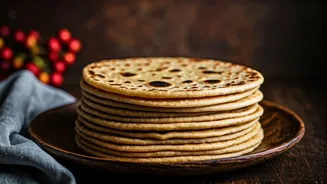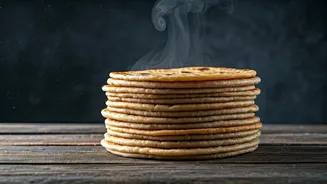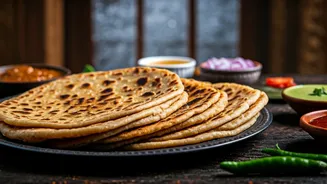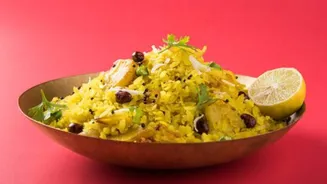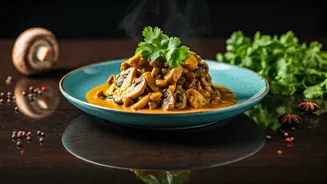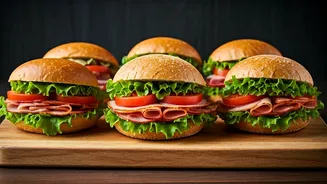Essentials for Parathas
To begin, gather the essential components for crafting outstanding parathas. Wheat flour is the primary ingredient, and you'll want to opt for high-quality,
finely ground flour for the best texture and taste. Water is crucial, and the ideal temperature is typically lukewarm; this encourages the gluten in the flour to activate properly, leading to a dough that is both pliable and strong. Salt is added to enhance the flavors, while a touch of oil or ghee contributes to tenderness and prevents the parathas from becoming too dry during cooking. When preparing the stuffing, consider diverse options that enhance the winter experience. Common choices include grated radish, spiced potatoes, or a mixture of winter vegetables like spinach. Spices such as red chilli powder, turmeric, and garam masala can significantly elevate the flavor profile. These ingredients work in harmony to produce the base for the paratha that is both nutritious and delightful, perfect for winter warmth.
Dough Preparation Matters
The cornerstone of excellent parathas is in the preparation of the dough. Start by sifting the wheat flour to get rid of any lumps, ensuring an even consistency. In a large mixing bowl, combine the flour, salt, and a small amount of oil. Gradually add lukewarm water while kneading the dough. The key here is to knead gently but thoroughly; the dough needs to be soft, smooth, and not sticky. This process develops the gluten, crucial for the paratha's texture. Keep kneading for about 10-15 minutes until it becomes elastic and easy to work with. Once kneaded, cover the dough with a damp cloth or plastic wrap to retain its moisture, and let it rest for at least 30 minutes. The resting phase allows the gluten to relax, making the dough easier to roll out, and the resulting parathas will be softer and fluffier.
Preparing Your Filling
The heart of a flavorful paratha lies in its filling. The most popular winter paratha fillings include finely grated radish, spiced potatoes, or a mix of seasonal vegetables. Preparing the radish filling involves grating the radishes and squeezing out excess moisture to avoid a soggy paratha. For potato filling, boil and mash the potatoes, then mix them with finely chopped onions, green chilies, and a blend of spices like coriander and cumin. Spinach, if used, should be pre-cooked to reduce its moisture content. Before incorporating it into the filling, sauté the spinach with spices. Regardless of the stuffing, make sure the flavors are well-balanced and the moisture content is controlled. This prevents the parathas from tearing during rolling and cooking. Taste and adjust the seasoning to your liking, as this determines the overall taste of your winter treat.
Rolling and Stuffing
Once the dough has rested, divide it into equal-sized portions. Flatten each portion into a small disc, and then it is time to stuff it. Take a portion of your prepared filling and place it in the center of the flattened dough disc. Gently gather the edges of the dough and seal them, forming a ball. Lightly dust the dough ball with flour to prevent sticking, and then begin to roll it out using a rolling pin. Roll gently and evenly, aiming for a round shape, around 6-8 inches in diameter. Be careful not to press too hard, to avoid the filling from coming out. Maintain a consistent thickness throughout the paratha to ensure it cooks evenly. This careful handling ensures the stuffing remains contained and the paratha cooks perfectly, resulting in a delightfully filled treat.
Cooking the Parathas
Cooking the parathas is crucial for achieving that perfect crispiness. Heat a flat griddle or tava over medium heat; a cast-iron skillet works best. Once the surface is hot, place the rolled-out paratha on it. Let it cook for about a minute or until small bubbles start to appear on the surface. Now, flip the paratha and lightly brush the cooked side with oil or ghee. Cook for another minute, then flip it again. Brush the other side with oil or ghee. Gently press the paratha with a spatula as it cooks, ensuring that it puffs up and cooks evenly from both sides. Cook until both sides are golden brown and crispy, indicating that the filling is cooked and the paratha is perfectly done. The final crispness and aroma are a testament to the skill used in every step.
Serving Suggestions
The ultimate joy of enjoying winter parathas comes with the accompaniments. Fresh yogurt, a dollop of butter or ghee, and a spicy pickle perfectly complement the warm parathas. A glass of hot tea or a cup of coffee adds to the warmth and comfort. Various chutneys, such as mint or coriander chutney, provide a fresh and zesty flavor contrast. For a full winter feast, serve the parathas alongside a hearty vegetable curry or a bowl of dal. Consider the taste profiles you prefer, and include those that complement the filling's flavors. This makes the meal feel more special and helps to elevate the paratha experience from a simple dish to a complete culinary delight. Enjoy your winter parathas with all your preferred sides!
